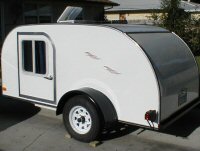Hi,
I have a 2008 Subaru Forester and a Hunter Fat Shadow.
I picked up the trailer and all light checked out and brought it home, about a week later I hooked up the car and the driver side brake light was on, I took it to the RV delaer I bought it from and the found the trailer light all wire proberly so I took it to Subaru and the said the wire haness converter was bad so they replaced it. All the light worked correct wehn I got it home but wait, we took off on Friday for our first time out and all lights worked fine, we headed for home on Saturday again all lights worked fine. Stopped at a park and had lunch, agian all light worked fine left the park and drove to a friend about an hour away and when we left there house lights were working fine. When we got to a resturant for dinner I parked the car and noticed all the running light were still on. I had to unplug the trailer to get the light to turn off. When we left the diner and I plugged the lights back in the were still on so IO checked and the break light worked along with the signals, I don't understand what is going on. I have constant power on the brown lead out of the pigtal from the converter. Any suggestions??? Confused.
Jerry
Trailer Light stay on when swithc off car
14 posts
• Page 1 of 1
I may be way off base here but try this.
Check all your connections car & teardrop plug for a single strand of wire that may be touching another terminal.
I had one, it gave me nothing but headaches until I found it. Danny
Danny
Check all your connections car & teardrop plug for a single strand of wire that may be touching another terminal.
I had one, it gave me nothing but headaches until I found it.
 Danny
Danny"Conditions are never just right. People who delay action until all factors are favorable do nothing". William Feather
Don't accept "It's Good Enough" build to the best of your abilities.
Teardroppers Of Oregon & Washington
-

halfdome, Danny - *Happy Camper
- Posts: 5894
- Images: 252
- Joined: Sun Aug 14, 2005 11:02 pm
- Location: Washington , Pew-al-up








